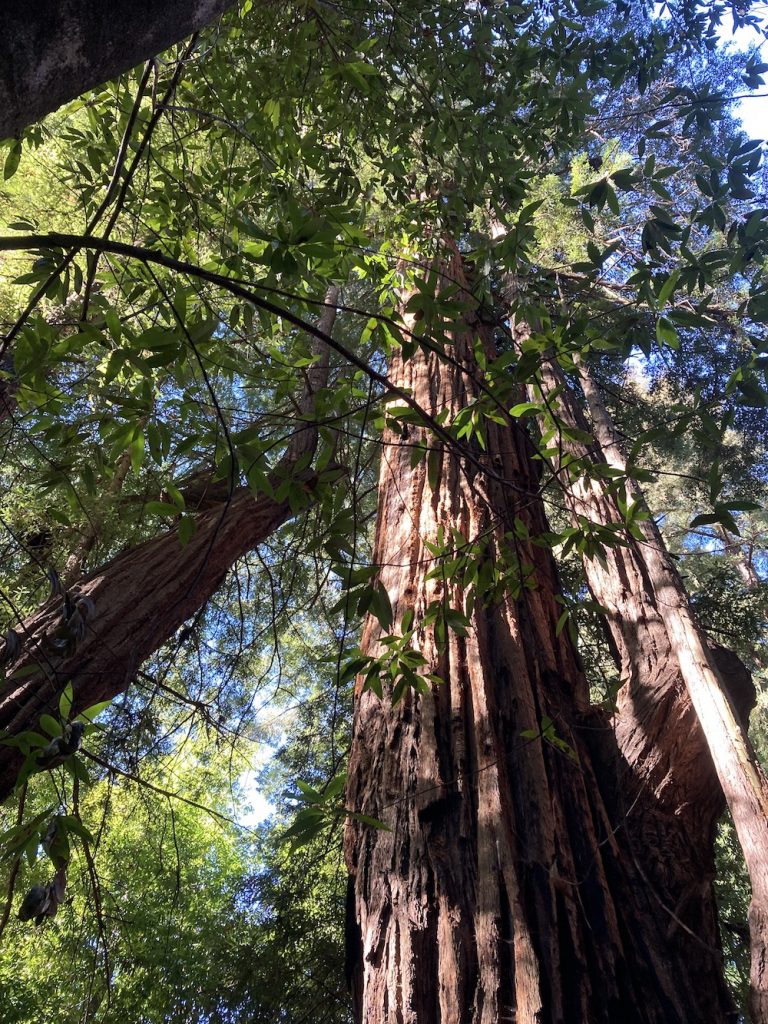You probably know that the rings in a tree stump tell you the tree’s age was when it was cut down. But do you read those rings for stories of hardship and community?
Wide rings tell a tale of growth and abundance. Tightly packed, narrow rings betray years with little productive growth. Yet the tree kept growing.
The story of the trunk doesn’t belong to this tree alone. In forests, trees communicate with and support each other through underground networks of roots and fungus. They exchange nutrients and moisture.
Today’s solitary giant may owe its very existence to a boost from the network when it was a scrappy sapling, blocked from the sun by the high canopy. In its maturity, it fed nutrients back into the network, sharing its surplus rather than racing for the sky.
What can trees can teach us about writing, output, and growth?
Learning from the trees
As long as we write, we grow.
We polish skills and build our craft. In some phases, we may not publish much—or anything at all. Nonfiction writers can spend years researching or learning about their topics. And life often makes other demands on our time.
Years ago, I put aside dreams of writing a book for various reasons. I continued in my marketing career, nagged by that sense that I wasn’t a “real” writer.
(It’s remarkable how many people feel they are not “real” writers when engaged in careers that depend on writing. Where is this “real” that we chase? Isn’t getting paid to write and publishing work that people read enough? But, I digress.)
Yet in the years that followed, with everything I wrote, I strengthened my craft: summoning sentences, wrestling words, tinkering with tone, and envisioning the needs of my readers.
If an omniscient surveyed everything I’d written since college, I hope they would see a writing voice strengthening like the trunk of a tree, even as it branches out and changes course.
What does your long-term writing growth look like? It’s easy to lose sight of how far we’ve come if we’re craning our necks upward to where we want to be.
If you’re in a narrow-growth-ring year, when conditions don’t allow major writing projects, that’s okay. Learn from the trees and keep growing.
Use your time to build skills
Trees are patient.
Take advantage of any writing you do to strengthen your craft. Even if you’re not working on a book you dream of writing, you can tinker.
For example:
- If you want to write stories, start a journal in which you practice short anecdotes. No one needs to see it but you.
- Insert a snippet of dialog into an email or blog pot. Recreate what someone has said and see what that feels like.
- In any work-a-day email or writing, challenge yourself to find and replace a single boring verb with a stronger or less expected one. Instead of “sharing the quarterly results,” see what else you can do with them: celebrate, chronicle, trumpet, reveal, circulate, air, spread the word… the list goes on.
Small efforts, practiced daily, accumulate over time.
Why not make the everyday world your writing workshop?
Tap into the writing network
Like that tree in the forest, you are not alone. If you want to grow, learn from the network.
Read other books in your genre and beyond. Read with attention and notice what the authors do. Could you experiment with a similar technique? Notice what inspires you and what you would choose to do differently.
Connect with other authors. Follow people slightly further along than you in their writing careers, as well as the big-name ones. Subscribe to their newsletters and listen to them on podcast interviews. You won’t copy what they do, of course. But you might learn a few things.
Give back to the network, if you can. Review books, volunteer as a beta reader for authors in your genre, and support other authors. Balance this work with your own writing.
These activities will support you as you write.
Keep writing
Most of all, keep writing—something, anything, for yourself or for others.
Five to ten minutes of writing in a journal every day is powerful, even if it produces nothing worth publishing. It trains your brain to notice the rest of the day. It helps you practice the skills of sentence construction. And it reinforces your commitment to writing.
Because finally, to grow as a writer, you must write.
Related reading
Perhaps you can tell, I just finished Finding the Mother Tree by Suzanne Simard, a memoir filled with her research on trees. For a shorter description, read The Hidden Life of Trees by Peter Wohlleben.
Also, check out My Story Journal Experiment.


